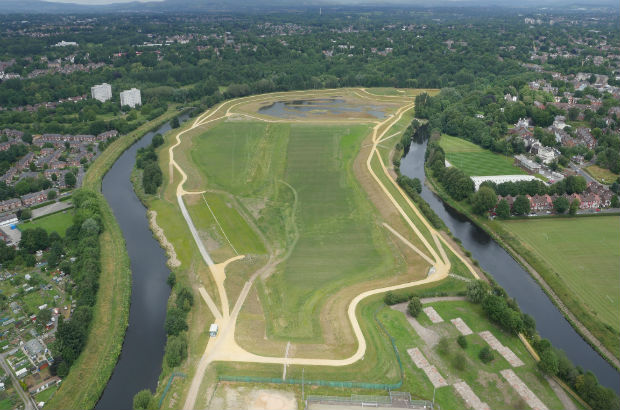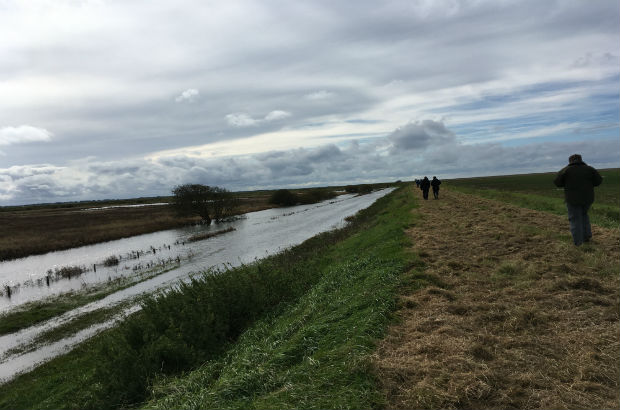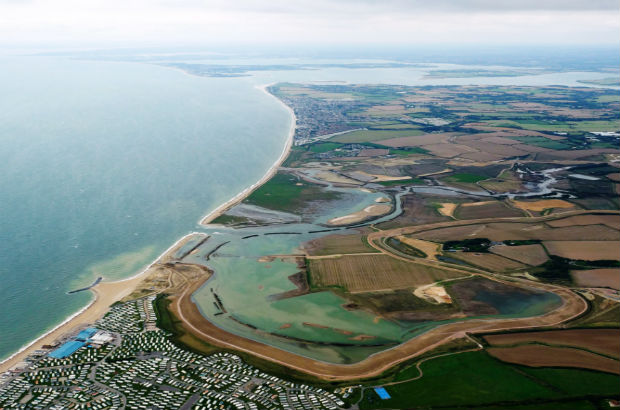
Marsh and mud have often received a bad press. In centuries past, coastal mudflats and marshes were thought of as derelict, even dangerous, places – scenes of criminal escapes and smuggled cargos landed.
But over the last few decades, we have been turning things around. It might not be a ‘revolution’, but marshes and mud have been making a definite comeback.
Today is World Wetlands Day, with a focus on urban wetlands making cities liveable. So it seems apt the Environment Agency has marked it by celebrating the completion of a project in Salford which includes 5 hectares of urban wetland. Not only does this project provide important habitat for many species of birds and mammals, some of which are endangered, but it will reduce flood risk to nearly 2,000 homes and businesses.
It’s the latest example of how we are working to improve our country’s muddy and marshy lands to benefit people and the environment.
But what exactly is a wetland and why do they matter so much?
The term ‘wetlands’ covers a range of ecosystems that thrive where water regularly covers land, like salt marshes, peat bogs and fens. They’re vital to the overall health of the water environment and have a number of benefits for nature and society.
Wetlands can serve as natural buffers for flooding, by soaking up and storing excess water, and slow the flow of water as it moves through a catchment. They may work as a natural filter, effectively removing pollutants, extra sediment or soil, and excess nutrients from the water.
Coastal wetlands and those on peaty soil can capture and store significant amounts of carbon. And the ecosystems that thrive there are some of the most biologically diverse in the world, providing a stepping stone between dry land and open water and supporting abundant fisheries and wildlife.
On the coast
Earlier this year we finished work on Hesketh on the Ribble Estuary in Lancashire, where we restored 154 hectares of land to its former glory of gurgling creeks crowned with sea aster, cord grass and the soulful call of redshank.

Hesketh was one of the last pockets of land to be ‘conquered’ in the name of the agricultural revolution and the post-war project for food security. It was land that ‘wanted to be wet’, and growing crops at this vulnerable bend in the estuary was always going to test the resolve of the ‘drain and defend’ approach to England’s marginal land.
Now, this area of inter-tidal wildlife habitat supports breeding avocet as well as flocks of wigeon, teal, shelduck golden plover and lapwing in the winter, thanks to work by the Environment Agency and the RSPB to complete a £6m managed realignment scheme there – one of the largest in the country.
‘Managed re-alignment’, which describes the setting back of existing defences either to naturally-rising ground or to a new set of flood banks, used to be a dirty word for many. In the 10 years I’ve been working in coastal management – since 2009 as the Environment Agency’s national senior coastal adviser – I’ve seen a progressive shift in attitudes. Re-alignment, instead of being seen as representing ‘giving in’ to sea level rise or ‘giving up’ productive land, is increasingly seen as advancing – advancing our natural resources, local economies and quality of life.
One of the reasons for this turnaround is the local benefits of marsh and mud – including protection from flooding. At Hesketh, 2km of new embankment has been placed at the back of the new saltmarsh that will protect over 140 properties and 300 hectares of high grade farmland from sea flooding. Calculations show that the scheme will provide more than £9.5m in economic benefits overall!
Research from Cambridge University supports a growing consensus that these wetland areas help manage flood risk themselves. A well-placed managed realignment scheme such as at Alkborough Flats on the Humber can allow storage for tidal estuary waters, or reduce wave pressure and deterioration to a sea wall.
Similar large schemes at Steart on the Severn Estuary and Medmerry on the south coast are in place on the south coast – but not all of the wetland we’re recreating or restoring is by the sea. Further inland, restored rivers and peatbogs help ‘slow the flow’ of water in rivers and streams. Plus, wetlands can store extra water after heavy rain, helping reduce the risk of flooding to towns and villages downstream.

Working with others to regenerate wetland
Working with others is key. In East Anglia, we are working with partners including Natural England and the Wildlife Trust to restore 3,700 hectares of the Great Fen wetland. Once again, parts of this area will be used to store flood water, but it also covers sites of special scientific interest (SSSIs) and National Nature Reserve (NNR) land. It’s an oasis for hundreds of species, including water voles, deer, more than 180 different kinds of birds, and Fen Woodrush – a plant found nowhere else in Britain.

And of course, there are wider benefits too. Wetlands attract bird-watchers, nature enthusiasts and other visitors, boosting local economies. Add their carbon storage and nutrient-locking qualities, and you have anything but a ‘wasteland’.
Our work continues – and last year the government announced an extra £15m for us to use on natural flood management, including creating washlands, wetlands and peatbogs. Not only does this enable us to find more lasting solutions to flood risk challenges, but we can help re-establish vital habitats and re-ignite local economies around a stunning natural asset. It’s time marsh and mud had a good press – vive la revolution.
Nick Hardiman is a senior coastal advisor at the Environment Agency.

1 comment
Comment by Matthew Dawood Khaghani posted on
Wetlands are home to a wide range of species, and a significant storage of CO2. We must protect them better.